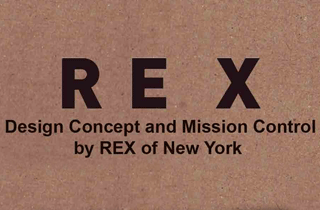The relationship between fashion and architecture is not a particularly oblique one. Both are based on structure, shape and prettying up basic necessities - clothes and shelter. The relationship between fashion and architects is less discussed. Yet even a glance at your garden-variety modern architect proves this is a group who are just as style-conscious as fashion designers. Hadley Freeman dissects their fashion choices
Le Corbusier and Walter Gropius established the look that has become Modern Architect Chic. Here we see the I-don’t-work-in-a-proper- office jackets and the I’m-a-bit-artistic bow ties that originated with this duo. Gropius’s bow tie is a little floppier than one would expect from the founder of Bauhaus (right), but
Le Corbusier’s pulled-together look is surely what one would expect of a man who used to design whole cities for a giggle
 Peter Eisenman
Peter Eisenman is
quite possibly my favourite of the lot. With the tie, the braces and, of course, the circular glasses, Eisenman's most obvious inspiration is Le Corbusier, but, with his penchant for Richard Rogers-esque bright colours, he sometimes looks a little more like a Technicolour Magritte. Most delightful is that, no matter how bright the tie and braces, his facial expression is always one of steadfast solemnity
Golly, do you reckon this chap gives much thought to his look? It’s just so insouciant - if I’m right in thinking insouciant is French for ‘more obsessively cultivated than a bonsai tree’. From the tips of his spiky hair to the heels of his trademark cowboy boots,
Daniel Libeskind’s outfit couldn’t scream MODERN ARCHITECT any louder if it stood in the street and bellowed through a megaphone
 Richard Rogers
Richard Rogers’ look rocks. The laid-back holiday style might seem at first a surprising diversion from standard Modern Architect Chic. But those of us in the know see a man who dresses like his buildings. I once bumped into Rogers in the Pompidou Centre, which is a plain structure encased in primary coloured detailings. Rogers wore a white suit with a bright yellow jacket: he was the human embodiment of his work

Here we see
Zaha Hadid proving that her aesthetic inclinations with regards to buildings are echoed in her wardrobe. In this photo, Hadid is standing next to a sculpture she made for the Serpentine Gallery in 2007. It’s a bit of a chicken-and-egg question: which came first, the dress or the artwork?
If ever anyone wanted to prove that architects are more style-conscious than fashion designers, here’s the evidence: Future Systems’
Amanda Levete (left) competely outshining Stella McCartney. Where McCartney has gone for her usual all-black tailoring, Levete goes for a more interesting look that echoes her work. Note the precision with which she draws her black cuff s over the sleeves of her white coat. That schtick ain’t accidental, you know
Nigel Coates is a rare thing indeed: an openly gay architect. And, as sure as night follows day, he is by far the most fashionable of the bunch. Look at him here, all the way back in 1998, working that Doctor Who look almost a decade before most of us had even heard of David Tennant. In classic architect style, he clearly cares about details: note how his cuffs peek out of his sleeves at exactly the same length on each side and tie perfectly matches jacket
Bravely ignoring US Vogue editor Anna Wintour’s recent diktat,
Norman Foster embraces the matchy-matchy look. Devotees of Trinny and Susannah will applaud the way Foster lengthens his leg by matching his trousers to his shoes. Every one else will muse distractedly on whether he has a different pair of shoes for each pair of trousers. Some may be surprised by his traditional attire. But as his full title is Baron Foster of Thames Bank, one feels it is a look that suits the man
Mike Davies has been having a hard time. Two words: Terminal Five. So who can blame the man for feeling the need to cheer himself up by wearing head-to-toe red, his signature style? You may not be surprised to hear that he works with Richard Rogers. But he is more hardline than his boss and sticks firmly to his beloved scarlet
From www.guardian.co.uk; originally title "Architecture and Fashon", By Hadley Freeman


































































































